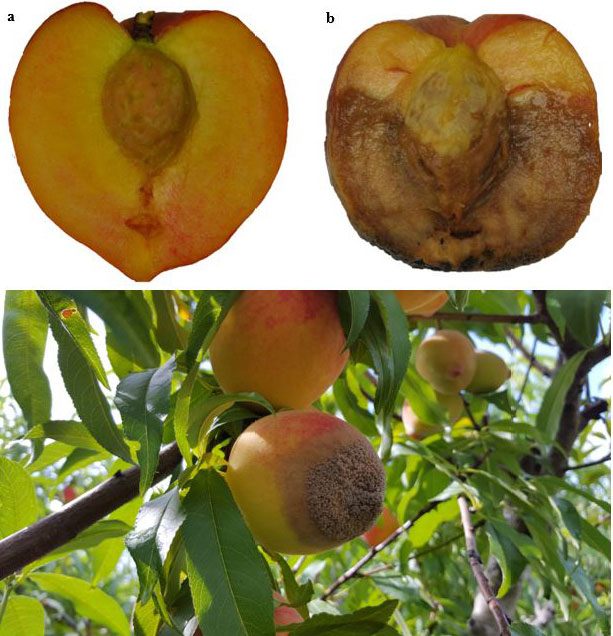By Clint Thompson
Alabama Extension reminds peach producers that brown rot disease can flare up this time of year and wreak havoc on the remaining crop. That is why growers should be diligent with their preventative fungicide sprays, says David Lawrence, Alabama regional Extension agent.
“It’s almost a given that if you don’t spray preventatively, you’re going to face it at some point throughout the year. Even growers that do spray, from time to time, have to deal with it depending on the weather. It can be devastating if gone unchecked,” Lawrence said. “As long as we can keep Captan or something moderate activity against brown rot out there we usually can hold it back pretty good this time of year.”
According to University of Georgia Extension, brown rot disease can attack flowers, stems and fruit of the peach tree. The disease causes blossom browning and wilting when it affects flowers. However, less than 1% of blooms are affected by brown rot. But that makes this stage an early warning to producers to begin disease control strategies for the year.
Stem infections lead to small, brown, elongated lesions, also known as cankers. These stem cankers can produce spores for the disease to spread.

“It spreads very easily. It develops these spores on the outside of the fruit. You can literally walk up and blow on one, the spores, you can see them dispersing. It disperses easy by wind, rain. Insects can carry it from fruit to fruit and tree to tree,” Lawrence said. “All the sprays that we do are preventative. There’s no curative spray for brown rot. That’s why we have to keep cover sprays out there on our green fruit. Once we get in closer to harvest time, really buckle down and keep those preventative sprays on the fruit at all times.
“We need to keep those cover sprays on all of our green fruit. On those certain varieties that are starting to ripen up two or three weeks out, go ahead and start spraying a different product; continuing to spray Captan or whatever they’re using for a cover spray. Everything is getting sprayed on a 10-to-14-day period regardless of what stage of development it’s in.”











